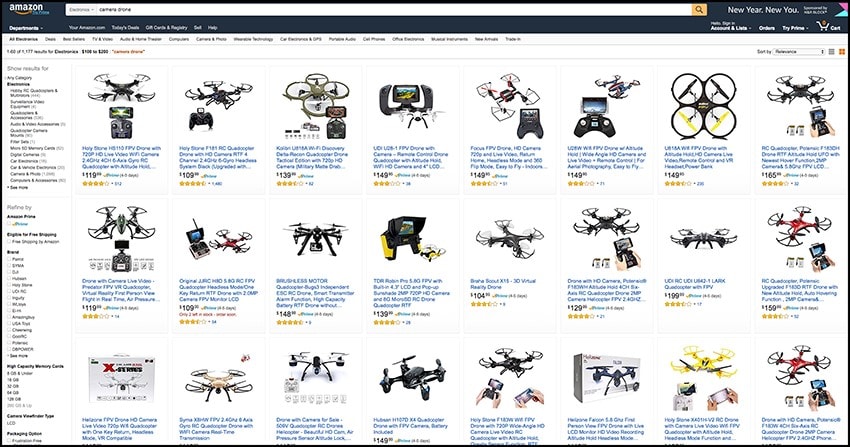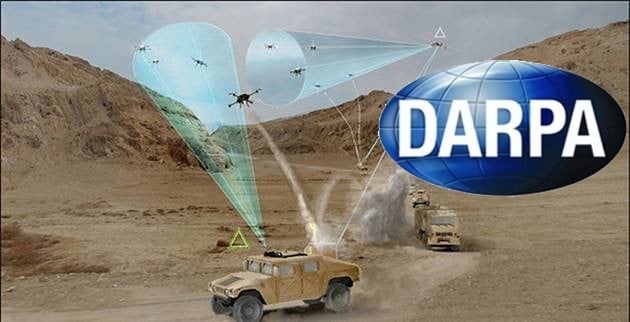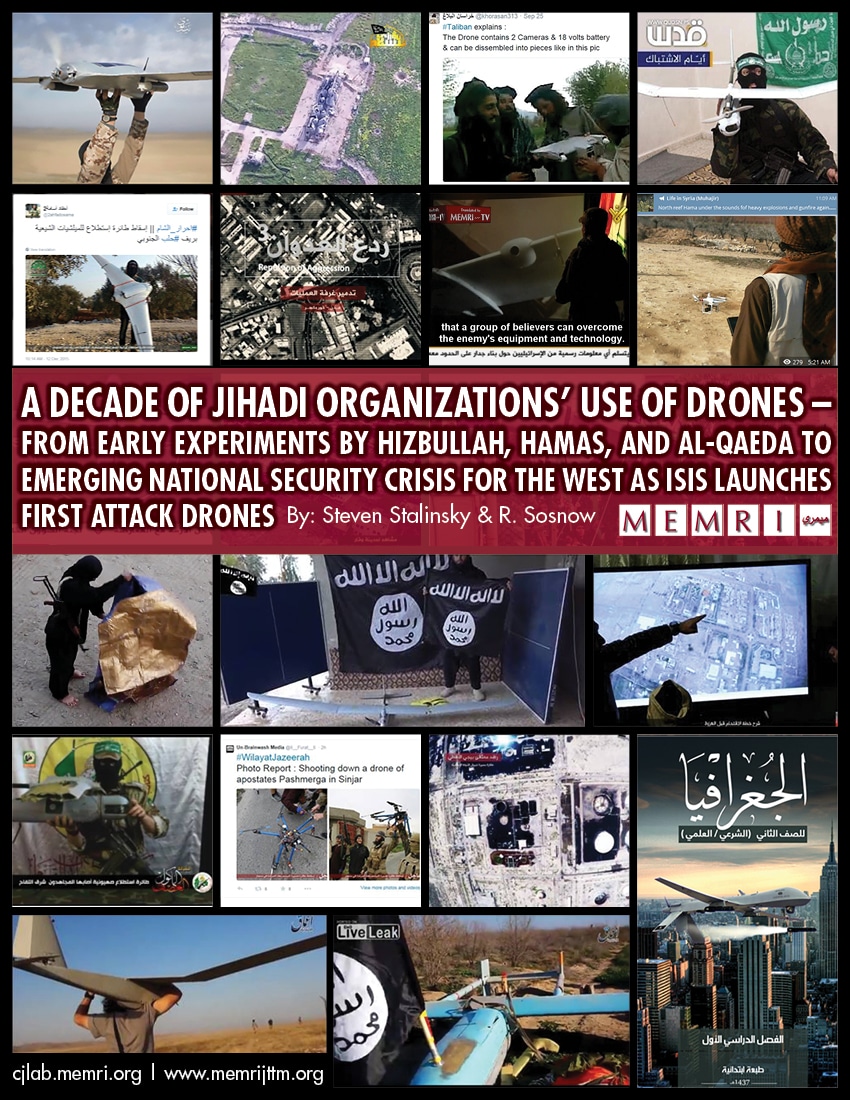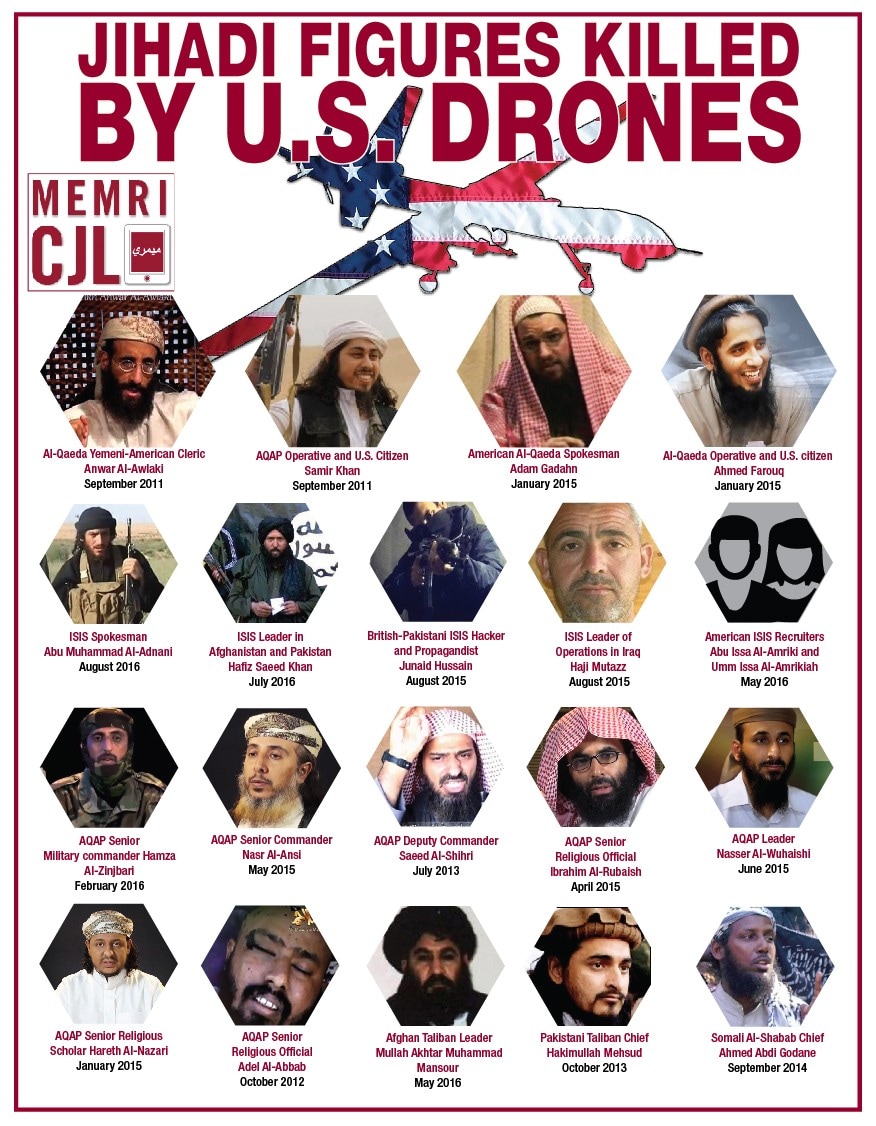Table Of Contents
- Introduction
- Hizbullah - First Terror Organization To Use Drones
- Hamas - Using Iran-Made Drones, Developing Its Own
- Palestinian Islamic Jihad (PIJ) - Hacking Into Drones
- Taliban - Focus On Anti-Drone Technology And Hacking
- Turkestan Islamic Party (TIP) - Drones Filming Battles
- Jaysh Al-Fath In Syria - Downing Drones, Aerial Filming Of Battles
- Al-Qaeda Central - Leaders' Fears Of Drones, Counter-Drone Strategy
- Al-Qaeda In The Arabian Peninsula (AQAP) - Targeting U.S. Drone Centers
- The Islamic State (ISIS) - Developing Drone Capability, Intelligence And Reconnaissance, Using Drones In Attacks
Introduction: A Brief History Of The Use Of Drones In The War Against Terror
While drones have been used for military purposes in one form or another since World War II, when they served as gunnery training targets, their use increased greatly after the September 11, 2001 attacks. Drones are capable of highly advanced surveillance, and already used by law enforcement. They can carry various kinds of electronic equipment, including live-feed video cameras, infrared cameras, heat sensors, and radar. Some military versions can stay in air for hours or days at a time, and their cameras can scan entire cities, or zoom in to focus on specific small objects from far away. They can also carry Wi-Fi crackers and fake cell phone towers that can determine location or intercept texts and phone calls. Drone manufacturers themselves acknowledge that they often are used to carry weapons such as Tasers or rubber bullets.
The MEMRI Jihad and Terrorism Threat Monitor Project has been monitoring jihadis' use of drones over the past decade, and has seen their advances in research and development culminating in the Islamic State (ISIS) Ninawa province's release, on January 24, 2017, of a 40-minute video showing its new weaponized drones (see The Islamic State (ISIS) - Developing Drone Capability, Intelligence And Reconnaissance, Using Drones In Attacks, below). Since this video came out, ISIS has carried out drone attacks on a nearly daily basis, and releasing videos and still photos of these attacks. This represents a major development in this area, and the MEMRI JTTM will be releasing further research on this issue in the future.**
 A video released by ISIS's Salah Al-Din province in Iraq today, February 21, 2017, showed fighters learning how to weaponize drones in a class.
A video released by ISIS's Salah Al-Din province in Iraq today, February 21, 2017, showed fighters learning how to weaponize drones in a class.
A Game Changer As A Weapon For The U.S. Against Jihadis
Drones' emergence in the war on terror was a game changer as a weapon for the U.S. After being used in 1991, in Operation Desert Storm, to acquire targets and direct fire, in 1995 in Bosnia, Croatia, and Albania to monitor air bases, entrenchments, supply caches and troop movements, and in Afghanistan, armed drone operations for military support were launched after 9/11. The first use of armed drones for a targeted killing was on February 4, 2002, in Paktia province in Afghanistan, near the city of Khost; the intended target was Osama bin Laden. Over the past few months, ISIS has stepped up its focus on drones in its videos and its discussions, to the point where it is a major theme. Drone footage of its fighters' suicide operations feature frequently in its videos - sometimes specifically to inspire and promote more suicide operations.
Drones Are Increasingly Easily Obtained, Sparking Major Security Alerts Worldwide
Because drones are so easily obtained today - for example, online retailer Amazon offers an extensive selection, and drones are also an integral part of its plans for the future - they are no longer used only by state militaries, but are now in the hands of private individuals - including jihadi and terrorist organizations. As of December 2016, Amazon began commercial drone deliveries.
A new project by the U.S. Army Research Laboratory and Georgia Technical Institute aims to give soldiers the ability to 3D-print drones to specific specifications within 24 hours. Thus, this is something that jihadis may aspire to as well, just as they aspired to master, and succeeded in mastering, other technologies.
 Drones available on Amazon.com
Drones available on Amazon.com
Drones have sparked major security alerts all over the world, including in the U.S. - by flying over the White House; the Washington Monument; the Empire State Building; Naval Base Kitsap-Bangor in Maine; the U.S. Open tennis tournament in New York City; the Savannah River Site nuclear facility in South Carolina; the New York State Capitol in Albany; and the Oklahoma State Penitentiary. Internationally, there have been security alerts when drones flew over the Eiffel Tower in Paris; the Sainte-Assise naval command and control center, near Paris; the Colosseum in Rome; Calgary International Airport; the Japanese prime 'minister's office; and other places.
Weaponized Drones - A Growing Concern To U.S. And West
Jihadi and terrorist use of drones is of growing concern to the U.S. and her allies. In July 2015, the U.S. Department of Homeland Security sent an intelligence assessment to police agencies across the country warning that unmanned aircraft systems or drones could be used in the U.S. to advance terrorist activities. Law enforcement sources said that "emerging adversary use of Unmanned Aircraft Systems present detection and disruption challenges."
A number of jihadi groups have released videos indicating that they have surveillance and reconnaissance drones. The surveillance drones allowed those groups to collect data on enemy bases, battlefield positioning and weaponry and improve targeting. By late 2016, it was being reported that inexpensive, off-the-shelf drones had changed how jihadi groups fight. ISIS, for example, is fitting them with explosive charges and turning them into guided missiles. According to the leader of the U.S. Army's Task Force Strike, which is advising Iraqi troops and other security forces fighting to retake Mosul from ISIS, ISIS is using drones to drop small bombs onto Iraqi security forces and civilians. Hizbullah too has learned how to weaponize surveillance drones, and the two groups are now using them against each other in Syria, a U.S. military official and others say. A video posted on YouTube on September 3, 2016 claimed to show a bomb-equipped drone belonging to the Al-Qaeda affiliate Jund Al-Aqsa landing on Syrian military barracks.
(To view the video, click above or here).
 Stills from video of Jund Al-Aqsa drone
Stills from video of Jund Al-Aqsa drone
A video released August 9, 2016 by a Hizbullah-affiliated media outlet appeared to confirm that Hizbullah is using attack drones, showing drones dropping cluster bombs on three Syrian rebel positions outside Aleppo, in support of the regime of Syrian President Bashar Al-Assad. The video is the first visual evidence that Hizbullah has used drones capable of carrying out bombings, though it has claimed to have the capacity since September 2014. The bombs in the video appear to be Chinese-made MZD-2 submunitions.
 Hizbullah drone bombs three Syrian rebel positions
Hizbullah drone bombs three Syrian rebel positions
(To view video, click above or here)
Speaking anonymously, a U.S. military official said that the U.S. military is aware of these developments. Commanders have warned troops to take cover if they see what they might have once dismissed as a surveillance drone, he said. Media reports added that these videos are the first known demonstration of these capabilities by any militant groups.
On October 2, 2016, Air Force Col. John Dorrian, the spokesman for the U.S.-led military coalition in Iraq, said that an improvised device on a drone had exploded after it was taken back to a camp near the Iraqi city of Irbil. He added that the U.S. had seen jihadis use a variety of improvised drones and modified drones, that "there's nothing very high tech about them" and that "[t]hey can just buy them as anybody else would. Some of those are available on Amazon." On October 12, 2016, the Pentagon said that French and Kurdish forces in northern Iraq had been attacked by an exploding drone. Chris Woods, the head of the Airwars project, which tracks the international air war in Iraq, said that the weaponized drones are clumsy but will scare people, and added: "There are a million ways you can weaponize drones - fire rockets, strap things in and crash them. This is the stuff everyone has been terrified about for years, and now it's a reality.""This is an enemy that learns as it goes along," said Lt.-Gen. Sean MacFarland, who was top American military commander in Iraq up until August 2016.
Following ISIS's January 24, 2017 release of its video of weaponized drones, Rep. Duncan Hunter (R-CA), who is a member of the House Armed Services Committee, said that it showed that ISIS had progressed in delivering improvised explosive devices. "In the end the IEDs are the terrorist's artillery... This is a natural progression for IEDs... We should have seen this coming." Asked if ISIS was capable of attacking a U.S. city with multiple drones, Mr. Hunter said, "Of course." Mr. Hunter recently asked the Army to update him on what it is doing to defeat terrorist unmanned aerial vehicles. Following a classified January briefing the same day the video was released, he said that he is confident that the military in Iraq has deployed defenses that will defeat ISIS drones.
Prior to the release of the video, on January 18, 2017, then-Army Secretary Eric K. Fanning wrote to Mr. Hunter noting that the jihadi drone threat is increasing: "These advances present our adversaries with opportunities to quickly adjust and improve their tactics, and the Army must remain adaptive and agile to respond to the evolving threat," Mr. Fanning wrote. He added that the Army was testing more than 20 government and industry systems "designed to detect, identify and electronically defeat" enemy drones. Additionally, Air Force Col. John Dorrian said: "I am aware that ISIS has used commercial-off-the-shelf UAVs to drop small explosive weapons. This capability is dangerous and has propaganda value, but it will not change the fact that the enemy is being defeated in both Iraq and Syria."
Pentagon's DARPA Developing Ways To "Address This Increasingly Important Issue" Of Drones
In August 2016, it was reported that the Pentagon's Defense Advanced Research Projects Agency (DARPA) outlined its concerns about the impact of commercial drone technology on defense capabilities, particularly the protection of large and dispersed ground and naval forces where conventional weapons, such as missiles, might not be as effective in future. According to a DARPA program manager, the agency "is interested in identifying novel, flexible, and mobile layered defense systems and component technologies to address this increasingly important issue as well as conventional threats," and hopes the initiative will lead to a scalable and affordable approach within the next four years. DARPA earlier this year kicked off its Gremlins program, under which several aerospace firms will be producing technology to launch swarms of cheap drones from an aircraft for brief missions before returning to a carrier aircraft. The program aims to develop distributed airborne capabilities.
 DARPA is exploring how to defend against a swarm of attack drones. Image: DARPA, August 12, 2016.
DARPA is exploring how to defend against a swarm of attack drones. Image: DARPA, August 12, 2016.
U.S. Drone Policy - Unequivocally Successful In Killing Jihadi, Terrorist Leaders And Fighters From Al-Qaeda, ISIS, Taliban, Al-Shabab
While today's U.S. drone policy has come under fire from Muslim and civil liberties groups, it has unequivocally succeeded in its mission to eliminate leading jihadi and terrorist elements, from Al-Qaeda to the Islamic State (ISIS). Among these are such well-known individuals as ISIS spokesman Abu Muhammad Al-Adnani, British-Pakistani ISIS hacker and propagandist Junaid Hussain, British ISIS fighter and executioner Mohammed Emwazi, aka Jihadi John, American ISIS recruiters Abu Issa Al-Amriki and Umm Issa Al-Amrikiah, ISIS leader of operations in Iraq Haji Mutazz, and ISIS leader in Afghanistan and Pakistan Hafiz Saeed Khan. Al-Qaeda operatives killed by drones have included Al-Qaeda Yemeni-American cleric Anwar Al-Awlaki, American Al-Qaeda spokesman Adam Gadahn along with U.S. citizen and Al-Qaeda operative Ahmed Farouq, U.S. citizen and Al-Qaeda in the Arabian Peninsula (AQAP) operative Samir Khan, and many other AQAP leaders - emir of Abyan, Yemen Jalal Al-Seydi in December 2016, senior military commander Hamza Al-Zinjbari in February 2016, leader Nasser Al-Wuhaishi in June 2015, senior commander Nasr Al-Ansi in May 2015, senior religious official Ibrahim Al-Rubaish in April 2015, senior religious scholar Hareth Al-Nazari in January 2015, deputy commander Saeed Al-Shihri in July 2013, and senior religious official Adel Al-Abbab in October 2012. Also killed by U.S. drones were Afghan Taliban leader Mullah Akhtar Muhammad Mansour, Pakistani Taliban chief Hakimullah Mehsud, and Al-Shabab Al-Mujahideen leader Ahmed Abdi Godane. U.S. drones have also eliminated other jihadis from the U.S., U.K., Australia, Egypt, Saudi Arabia, Yemen, and more countries, including Syria, Iraq, Yemen, Pakistan, and Afghanistan.
The U.S. has also targeted jihadi drone centers in the ISIS "caliphate"; for example, between November 28 and December 1, 2014, coalition airstrikes struck an "electronic warfare garrison" in Al-Raqqa, Syria, and on December 12, 2015, U.S. CENTCOM reported that one of its military airstrikes against the Islamic State (ISIS) in Syria and Iraq the previous day had "struck an ISIS tactical unit and destroyed an ISIS building and an ISIS drone" near Manbij, Syria.
When the U.S. launched its strategy of targeting Al-Qaeda personnel using drones immediately after 9/11 - including, on October 16, 2001, its targeted killing of senior Al-Qaeda operative Khalid Habib - the organization began investing major efforts in attempts to hack into drones and to stop them by other technological means. However, the first terrorist groups to use drones were Hizbullah and Hamas. Jihadi groups from Al-Qaeda to ISIS have collected downed or crashed U.S. drones and used the technology, while Iran has for some time been supplying Hizbullah and Hamas with drones.
Drones Today A Strategic Cyber Element For Al-Qaeda, ISIS, Taliban, Houthis, Hizbullah, Hamas, Others
Today, drones are a strategic cyber element for not only Al-Qaeda but for ISIS, the Taliban, the Houthis in Yemen, and other jihadi organizations in Syria, Iraq, Libya, Somalia, and elsewhere. As jihadis began using drones, they also began to share technology with each other - including technology they obtained from U.S. drones.
In December 2009, it was reported that Iran-backed Iraqi militants had hacked into video feeds of American Predator and Shadow drones. They passed what they found on to Hizbullah. This was a precedent for Iran's provision of drones and drone technology to Hizbullah for use in Syria and to the Shi'ite Houthi rebels in Yemen. For example, on January 20, 2016, Shi'ite Houthi rebels shot down a U.S. drone over the Yemeni capital Sana'a. A video showed them launching a Russian S-75 Dvina missile.
(To view video, click above or here)
 Right: Houthi rebels aim missile at drone; left: the downed drone
Right: Houthi rebels aim missile at drone; left: the downed drone
In a February 10, 2017 speech broadcast on Al-Alam TV, Houthi leader Abd Al-Malik Al-Houthi said: "With the grace of Allah, [our people] has managed... important and quality achievement: It has begun to produce drones."  (To view video, click above or here)
(To view video, click above or here)
Jihadi Groups May Be Using Advanced Electronic Systems To Protect Their Drones
Jihadi groups may have also begun using advanced electronic systems to protect their drones from being shot down. A drone claimed by Hizbullah that was sent into Israeli airspace from Syria on July 17, 2016, which Israel's Patriot surface-to-air missiles and possibly an air-to-air missile failed to bring down, is thought by some to have been equipped with such a system. The drone was identified by "military and intelligence sources" as a Yasir, an Iranian copy of the Boeing Insitu Scan Eagle drone. According to reports, the alleged Hizbullah drone exhibited atypical maneuverability, supporting claims that it was using advanced electronic systems from the U.S. that were based on an American ScanEagle drone intercepted over Iran on December 12, 2012. Iran has said that it reverse-engineered the design to create the Yasir, which it supplied to Hizbullah, and it has also been reported that cyber warfare specialists from China are responsible for upgrades to it.
 Yasir aerial drone. Photo: Fars, Iran; source: Chinatopix, October 7, 2016.
Yasir aerial drone. Photo: Fars, Iran; source: Chinatopix, October 7, 2016.
Al-Qaeda Leaders Had Distributed "Strategy Guide" To Operatives Around The World Advising Them How "To Anticipate And Defeat" Unmanned Aircraft.
As noted, the U.S.'s drone efforts against jihadi organizations have been successful - they have decimated the Al-Qaeda leadership and eliminated key ISIS figures, impacting how these organizations operate and plan.
In July 2010, the Defense Intelligence Agency (DIA), a U.S. spy agency, intercepted electronic communications indicating that senior Al-Qaeda leaders had distributed a "strategy guide" to operatives around the world advising them how "to anticipate and defeat" unmanned aircraft. The agency reported that Al-Qaeda was sponsoring simultaneous research projects to develop jammers to interfere with GPS signals and infrared tags that drone operators rely on to pinpoint missile targets. According to the report, other projects in the works included the development of small radio-controlled aircraft, or hobby planes, which insurgents apparently saw as having potential for monitoring the flight patterns of U.S. drones. DIA analysts also noted that they believed that Al-Qaeda "cell leadership is tracking the progress of each project and can redirect components from one project to another." That same year, the CIA noted in a report that Al-Qaeda was placing special emphasis on the recruitment of technicians and that "the skills most in demand" included expertise in drones and missile technology.
President Obama's Drone Policy Declassified
In August 2016, President Obama's drone policy was revealed in a newly declassified document that included administration guidelines setting out how he approved operational plans to target overseas terrorist suspects with drones or other weapons outside war zones. The document set out the role of the president, emphasized "verifying" the identity of high-value targets, and set out the criteria and legality of striking unidentified others when "necessary to achieve U.S. policy objectives." The previous month, the administration said that it had inadvertently killed 64 to 116 civilians in drone and other lethal air attacks against terrorism suspects in non-war zones, in addition to 2,372 to 2,581 "combatants" in 473 strikes in countries where the U.S. is not at war. Although it did not name the countries, they include Pakistan, Yemen, Somalia and Libya. The figures do not include deaths in ground operations, such as the one that killed Osama bin Laden and four others in Pakistan in 2011, or operations in the administration-designated war zones of Afghanistan, Iraq and Syria.
The U.S. State Department began asking countries to sign onto a set of international norms for the sale and use of armed drone systems; in late August 2016, department officials met with delegates from various nations at the Arms Trade Conference to discuss the matter. Additionally, the State Department's draft "Proposed Joint Declaration of Principles for the Export and Subsequent Use of Armed or Strike-Enabled Unmanned Aerial Systems (UAS)" was sent to a number of international allies of the U.S, according to a department official, who would not confirm if any countries had agreed to sign. The document lays out five key principals for international norms, including the "applicability of International law" and human rights when using armed drones; commitment to following existing arms control laws when considering selling armed unmanned systems; when exporting armed drones, first considering the "recipient country's history regarding adherence to international obligations and commitments"; that countries that export unmanned strike systems follow "appropriate transparency measures"; and that there be a resolution to "ensure these capabilities are transferred and used responsibly by all States." That language is likely well below what anti-drone advocates and the arms control community would like to see, but the State Department official said the document represents only an "important first step" toward creating international standards for drone exports.
Trump's Incoming National Security Team And Drones
During his election campaign, President Trump said that he would continue the Obama administration's policy of using drones to eliminate terror leaders overseas. In May 2016, he said: "I have to do what's right. I will do what's right. As far as drones are concerned, yes. To take out terrorists."
SOME KEY POINTS IN THIS REPORT ARE:
-
Jihadi discussions about drones on social media, websites, and forums, on topics such as: planning attacks on U.S. drone bases, hacking drones, modifying commercially available drones, building homemade drones, and developing methods to disrupt and down Western and rival jihadi groups' drones, and more.
-
Jihadi claims of hacks of U.S. and other drones for various purposes, including U.S. and Western military drones, and for targeting individuals accused of selling information to the U.S. for facilitating drone attacks; social media posts by Al-Qaeda, ISIS, and other groups show these spies executed and crucified.
-
Documentation of Al-Qaeda leaders Osama bin Laden's and Ayman Al-Zawahiri's fear of drones, showing the U.S. drone program's far-reaching impact on Al-Qaeda's operations.
-
Jihadis target U.S. drone command centers - among them Al-Qaeda in the Arabian Peninsula (AQAP).
-
Jihadis' use of drones for surveillance and bombing of jihadi opponents, filming battles, reconnaissance, and more.
-
U.S. officials' concerns about drones equipped with IEDs and cameras and about the use of drones for reconnaissance, propaganda, and fighting; Pentagon efforts to develop counter-drone capabilities. Jihadi reactions to U.S. drone attacks, including sharing information for disrupting and downing drones and proposals such as using Amazon-style octocopter to deliver explosives.
-
Jihadi use of drones to conduct battles and coordinate fighting during attacks, beginning with ISIS's attack on the Baiji oil refinery complex in Iraq in December 2014.
-
ISIS's and other groups' use of drone video footage to plan attacks and develop military strategies.
-
ISIS and other educational systems' teaching of children about drones, about fearing them, and about their use - for example, schoolbooks showing a drone flying over New York City.
-
Jihadis' easy access, including online, to drones from hobbyist level to military grade.
The following report will show how jihadis use drones, the impact of U.S. and Western drone efforts against jihadi groups, and jihadi communications, including on social media, focusing on drones, sharing and collaborating on hacking and adapting drones, and more. As noted, jihadi use of drones is of great concern to the U.S. authorities, particularly because they are so easily available - order online and receive it the next day. We know that major jihadi organizations are currently experimenting with drones in hopes of using them against targets in the U.S. and the West; while they have had limited success so far, Western counterterrorism efforts need to be ready and need to be coming up with solutions.
Latest Posts





